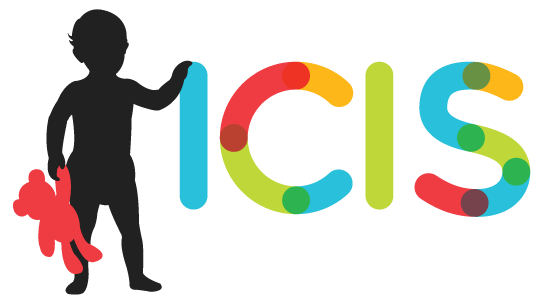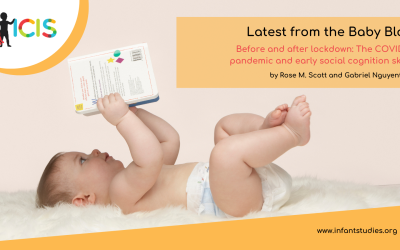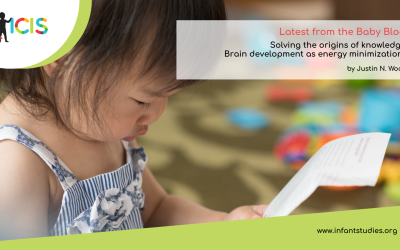by Suzanne Curtin, Janet Werker, & Henny Yeung
This blog post is an adaptation of an op-ed that appeared in the Globe and Mail on Feb. 23rd, 2021.
Facemasks are an essential public health tool against the spread of COVID-19(1), but now that vaccine distribution in many rich countries is proceeding at record rates, there are renewed debates about what role facemasks will have in guarding against future resurgences of this virus and its variants. As children (and perhaps, eventually, infants) become vaccinated, there will be correspondingly new questions about the role that facemasks have in those public spaces where infants and children gather, like childcares, playgrounds, and schools. Many have thus asked how degraded auditory speech and the accompanying loss of visible facial cues from wearing masks could influence speech and language development. In ideal listening conditions, such as a controlled lab environment, there is brand new evidence from Singh, Tan, & Quinn that infants can recognize spoken words produced by a speaker wearing a mask(2). However, the muffling of speech that can occur from wearing a mask (or two, in the case of double-masking) in normal listening environments creates exactly the conditions where visible speech would be incredibly helpful – particularly if there is also background noise like in a busy classroom or daycare. Some researchers have advocated the use of clear masks, but little research has been done on whether – and what kinds of – clear masks help, with Singh et al.’s research suggesting clear masks could even distort visible speech 2 for infants.
As infancy researchers, we know that infants are attracted to faces from birth, and are sensitive to the correspondence between the sound and sight of a talking face. Indeed, work from ICIS members has shown that babies and toddlers can and do use visible information in talking faces to assist their processing and learning of spoken language. Other work from researchers working at older ages has also shown that the ability to use visual speech continues to grow across childhood and into adolescence. However, while children throughout the 4 to 14 year age range can use their immature visual speech abilities to aid perception when the auditory signal is obscured or when listening in noisy environments, a reliance on visual speech is much larger in older than younger children, and it is only in adulthood that visual cues significantly improve speech processing even in quiet environments. Even though children use visual speech information, it may not be as important for language comprehension as it is for adults.
So how concerned should we be that an increased use of facemasks compared to pre-COVID times might impact infant and child language development, and eventual school-based learning? While we need to be vigilant, there are perhaps several reasons not to be overly concerned. First, mask-wearing is not common at home, and so infants and children likely have considerable opportunity to hear language while watching talking faces. A critical research question is just how much access to this visual speech component is needed to provide sufficient exposure for language development. For now, we do think it is important to encourage face-to-face interactions in the home for parents and other home caregivers, which not only provides access to visible talking faces, but critically, also supports the kind of rich conversational interactions that we know are essential for healthy language development.
Second, it is also not known whether access to visual speech outside the home is equally important for all learners and across all environments. For spoken language, for example, access to visual speech may be crucial in only some circumstances, like in noisy environments; only for some children, like those learning in a second language at a certain age; or only in some tasks, such as when teachers are trying to teach children to map sounds onto letters. Masked faces might also pose a significant challenge for other populations, such as deaf or hard of hearing infants and children who are learning a signed language, where a great deal of critical linguistic information is conveyed through lip movements and facial expressions. Finding the answers to these questions can help parents and educators figure out alternative strategies for these settings and/or for these learners.
Third, we need to better understand how much speech information is conveyed from the parts of the face that remain unobscured by masks. While the bulk of speech is certainly conveyed by the movements of the mouth and lower face, there is also information in eye movements, head nods, and the like, which undoubtedly contribute to language understanding. The brains of infants and young children are more plastic than those of adults. Thus, young children may be able to learn – more rapidly than adults – to use the information that is available even in masked faces to facilitate understanding of what is being said. While we wait for research addressing these questions, we can take comfort from recent studies that show children – and even toddlers – can learn language in carefully selected interactive online book reading and video chat sessions, providing another avenue of access to visual speech information.
Although it is unclear how prevalent facemasks will be in public spaces over the next few years, we do think that facemasks will be more present than in pre-COVID times, particularly in global regions where vaccinations are not efficiently and equitably distributed(3). Indeed, this is not a new phenomenon:
Face coverings—whether for religious and cultural reasons, or as protection against disease or pollution—are common in public spaces within many societies, and children growing up in these societies are successful too in learning spoken language. So, until masks are no longer required, let us remember that the development of children’s use of visual speech spans many years, and there is not currently any evidence that reduced exposure to faces has any dramatic impact on speech and language development. As we wait for evidence-based best practices about mask use and language development, we should all do our best to ensure that we communicate and interact with our infants and children at home, not simply because home is where we remove our masks, but rather because decades of research has shown that language development is optimal when infants have a rich language environment, hearing lots of speech with a variety of words and sentences in socially-guided conversational interactions.
Footnotes
- https://www.canada.ca/en/public-health/services/diseases/2019-novel-coronavirus-infection/prevention-risks/about-non-medical-masks-face-coverings.html
- Singh, L., Tan, A., & Quinn, P. C. (2021). Infants recognize words spoken through opaque masks but not through clear masks. Developmental Science, (May). https://doi.org/10.1111/desc.13117
- https://www.washingtonpost.com/opinions/global-opinions/rich-countries-me-first-vaccine-hoarding-is-leaving-behind-low-income-nations/2021/01/23/3830e7d4-5c23-11eb-a976-bad6431e03e2_story.html
If you have expertise in covid-related issues in countries outside the United States and would like to write a post for the ICIS Baby Blog, please let us know!
About the Author

Suzanne Curtin
Brock University
Suzanne Curtin is a professor in child and youth studies and dean of graduate studies at Brock University.

Janet Werker
University of British Columbia
Janet Werker is a Killam professor in the department of psychology, and co-director of language sciences, at the University of British Columbia.

Henny Yeung
Simon Fraser University
Henny Yeung is an assistant professor in the department of linguistics at Simon Fraser University




